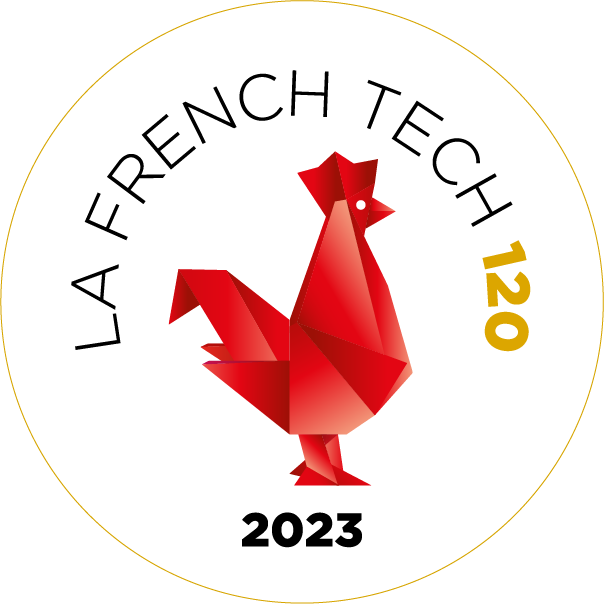Accueil > Newsletter > Constell'Actions April 2024
Constell'Actions n°9
April 2024

KINÉIS CONSTELL’ACTIONS
Kinéis Constell'Actions is the monthly newsletter devoted to progress on the design and deployment of the Kinéis connectivity system for the Internet of Things (IoT). In these early days of spring, the nanosatellites from batch 1, the first five in the constellation to be placed in orbit, have completed their final tests. In a few weeks time, they will take off for New Zealand for the 1st launch. The technical teams have continued their training for the post-launch phase of the nanosatellites. Thanks to Constell'Actions, you can follow the deployment of the Kinéis system and experience the final weeks before the 1st launch, scheduled for this summer. Welcome on board and enjoy your reading!
BEHIND THE SCENES OF KINEIS NANOSATELLITES PRODUCTION

Clean room technician working on the integration of a Kinéis flight model satellite
Launched at the beginning of the year at Hemeria in Toulouse, the production of the 25 nanosatellites of the Kinéis constellation is a first in the French space industry. This unprecedented system is made up of centres installed in the same huge clean room dedicated to the project, where the meticulous work of the teams is comparable to the French know-how in watchmaking and high-tech haute-couture to produce these 25 technological jewels. There are no robots here, everything is done by hand and under human supervision, with visual checks (quality control points) carried out at certain stages of production.
Stage 1: Mechanical integration. Assembling the structure, fitting the harness (all the wiring) and the equipment inside the satellite (everything that makes it up and its payload).
Stage 2: Initial Functional Tests (IFT). When the satellite is fully assembled with its equipment and harness, we check that it is working properly before it is finally closed.
Stage 3: Integration of the solar panels and deployment tests.

Stage 4: Weighing of the nanosatellite and measurement of its centre of gravity, followed by magnetic tests to ensure that there are no magnetic fields that could interfere with the magneto-torquer (or magnetic coupler) in correcting the satellite's attitude towards Earth, if necessary.
Stage 5: Mechanical vibration tests at Mecano ID.
Stage 6: Thermal tests at Hemeria.
Stage 7: Final Functional Tests (FFT) carried out by the Kinéis teams at the end of the integration and environmental tests (mechanical and thermal) to ensure that the satellite is in good working order.
Final stage: Configuring the satellite, in particular its software for launch operations. A final review is carried out by the Kinéis-Hemeria teams to check and validate the corrections to any anomalies and the test reports. The nanosatellite then enters the storage or containerisation phase, prior to departure for New Zealand.
In the event of an anomaly on a nanosatellite, the 'Hospital' station allows the satellite to be taken out of the production circuit to be investigated without affecting the production rate. Once the anomaly has been resolved, the nanosatellite is returned to the production circuit.
KINEIS FIRST 5 SATELLITES READY TO FLY... TO NEW ZEALAND!

Kinéis nanosatellite flight model being integrated
The Kinéis and Hemeria teams have carried out the final mechanical, thermal and functional tests on the first 5 nanosatellites that will be taking off in a few weeks' time. Already carried out on the Proto-Flight Model (PFM) last summer under more severe environmental conditions, the aim of these tests was to verify the functions and performance of these 5 satellites under environmental conditions identical to launch and flight conditions (vibrations and extreme temperatures).
At Mecano ID, each of the 5 nanosatellites was vibrated on 3 axes in order to check the following points: that the satellite was manufactured correctly, that the deployable elements (solar generator, antennae) held in place and did not deploy during the vibrations, and that there were no post-vibration defects, validating that the satellite's functions and performance had not been degraded.
The tests were carried out at Hemeria, where cold and hot thermal bearings were used to test the satellites in the temperature ranges to which they will be subjected during their life in orbit.
The results of the mechanical and thermal tests are good, and the teams were able to check the corrective measures taken following the tests carried out last summer in a thermal vacuum on the 1st qualification satellite (PFM).
Next step : final configuration of the 5 satellites for flight, before transport to New Zealand and production of batch 2 (2nd batch of 5 nanosatellites).
POSITIONING NANOSATELLITES: PREPARING TEAMS FOR POST-LAUNCH OPERATIONS

Teams at the Kinéis Command and Control Centre at CNES (French space agency) in Toulouse
The Kinéis and CNES teams carried out Technical Operational Qualification (TOQ) tests during the 2 days following launch(Launch Early Operation Phase, LEOP), with the introduction of degraded cases (anomalies) into the operational scenario.
The aim of these tests was to prepare the general rehearsal (GR) for the launch of the 5 satellites, and they represent an important transitional phase between technical qualification and operational qualification. The teams 'replayed' the stationing scenario in preparation for the GR.
The aim was to finalise the procedures and the chronology of operations for the first 48 hours of the nanosatellites after separation from the launcher. This scenario also aimed to test the validation procedures for the equipment helping to put the satellites into orbit (wheels, star sensor, propulsion system) for the start of the in-flight acceptance test*.
The teams also tested the maturity of the established operational procedures for the delicate transition from in-flight acceptance operations to the stationing manoeuvre phase.
These tests required a high level of coordination between the Kinéis and CNES teams and all the components of the Kinéis system: space segment (via simulator), mission centre, command and control centre, flight dynamic system** (FDS) and on-board equipment. They highlighted the challenges of this particularly critical phase, 2 days after launch, which is essential for taking control of the 5 satellites and starting the subsequent phases of in-flight acceptance of the satellites, followed by their transfer to their final orbital position.
*In-flight acceptance: This involves each satellite system entity validating all its capabilities as quickly as possible, through a series of operations identified in advance. The organisation of the in-flight acceptance test will make it possible to check that the platform equipment is working properly before the start of operations.
** Flight dynamics system: orbit calculations required for satellite manoeuvres.
Next step: the general rehearsal


À propos
Créé en 2018, Kinéis est un opérateur IoT satellitaire.
© kineis - IoT everywhere - 2023
Nous contacter
Adresse
11, rue Hermes
31520 Ramonville Saint-Agne
France
Téléphone
05 61 39 47 00
Liens
FAQ
Espace presse
Newsletter
Actualités
Politique de confidentialité
Politique de cookies
Plan du site
Restons connectés






